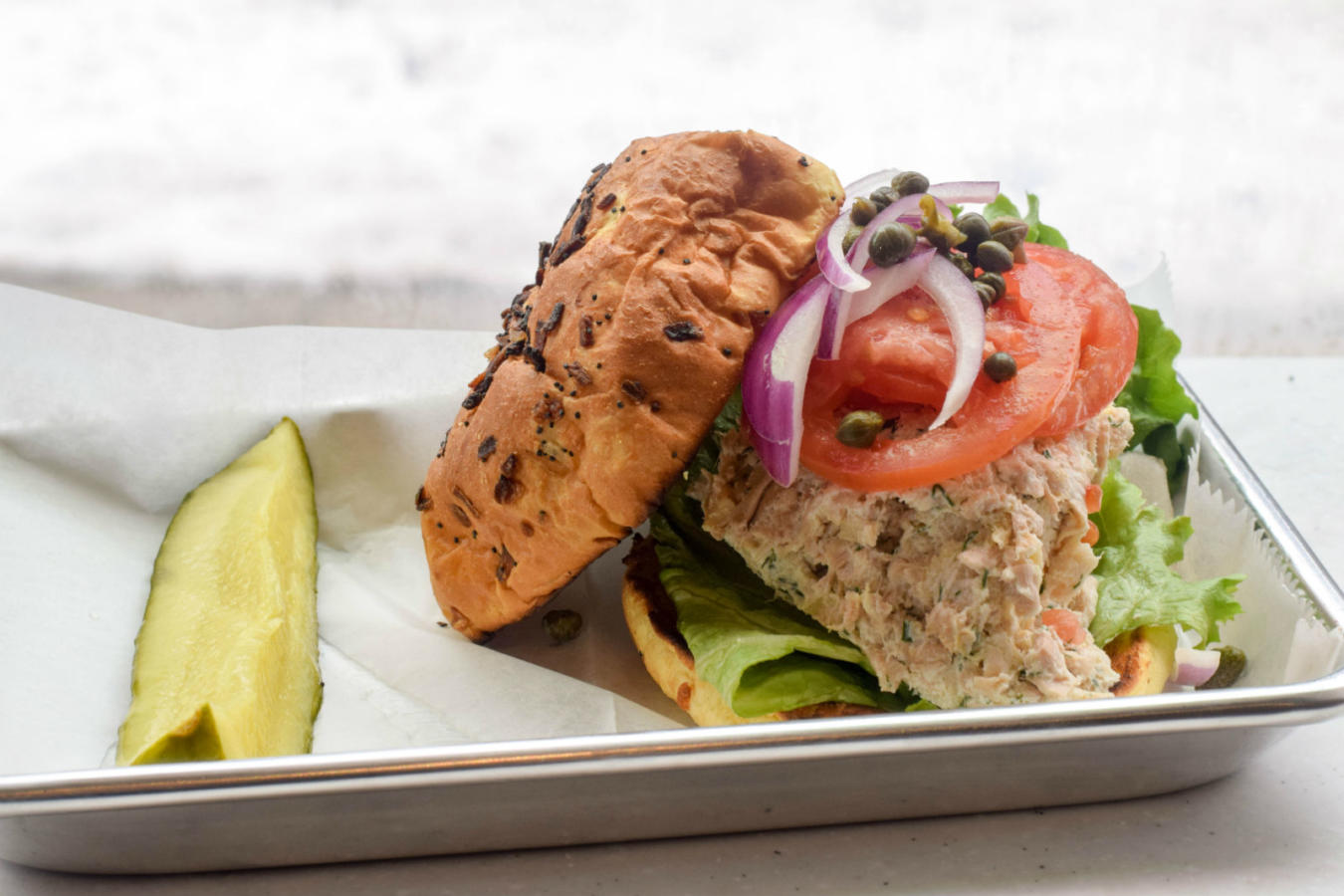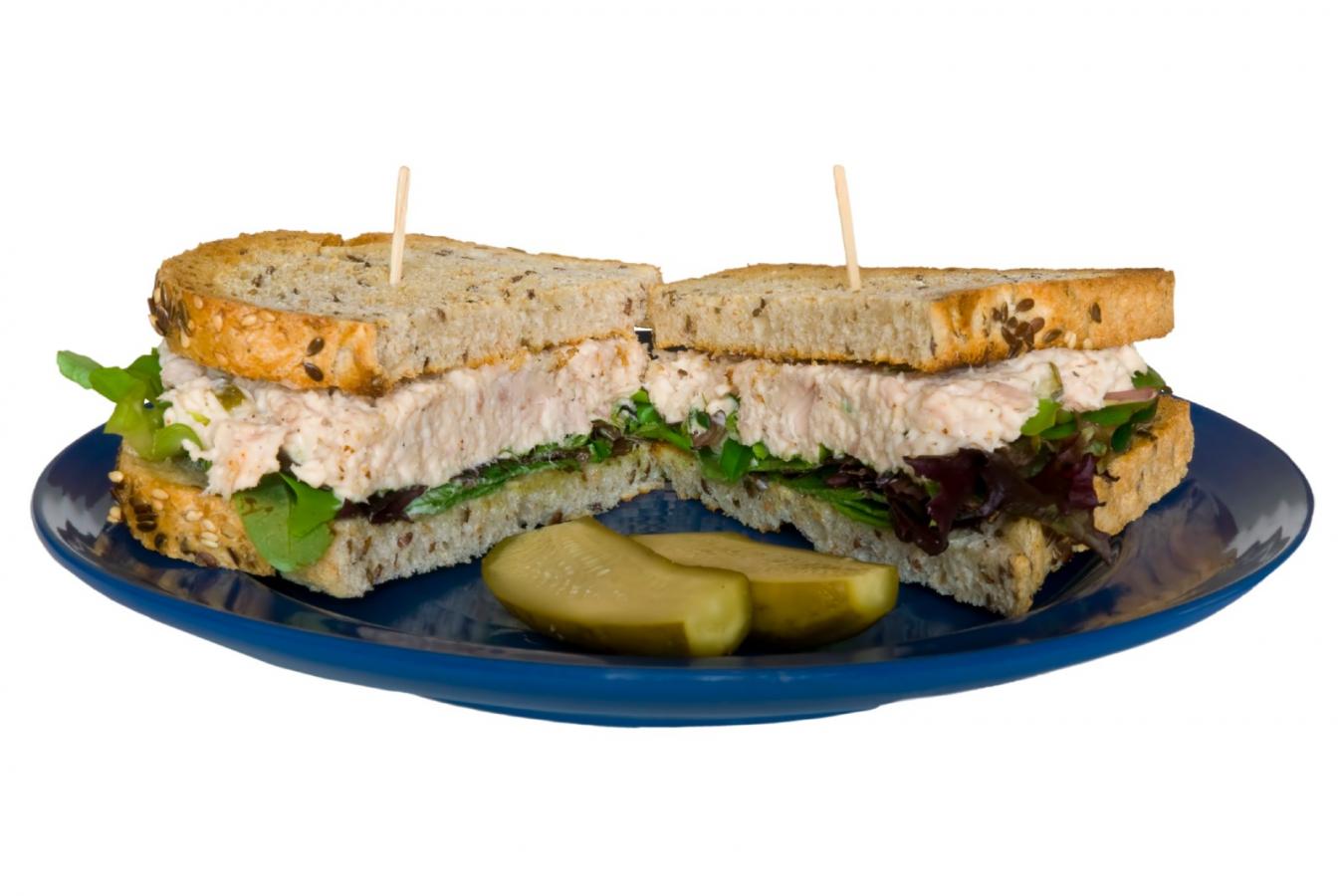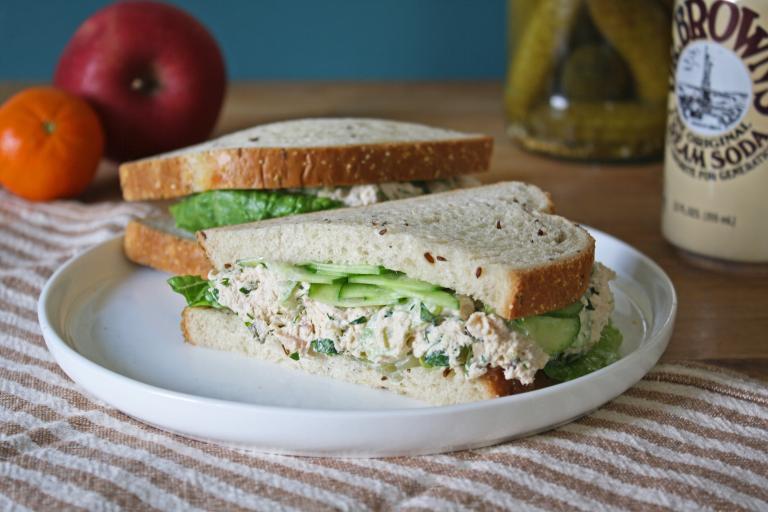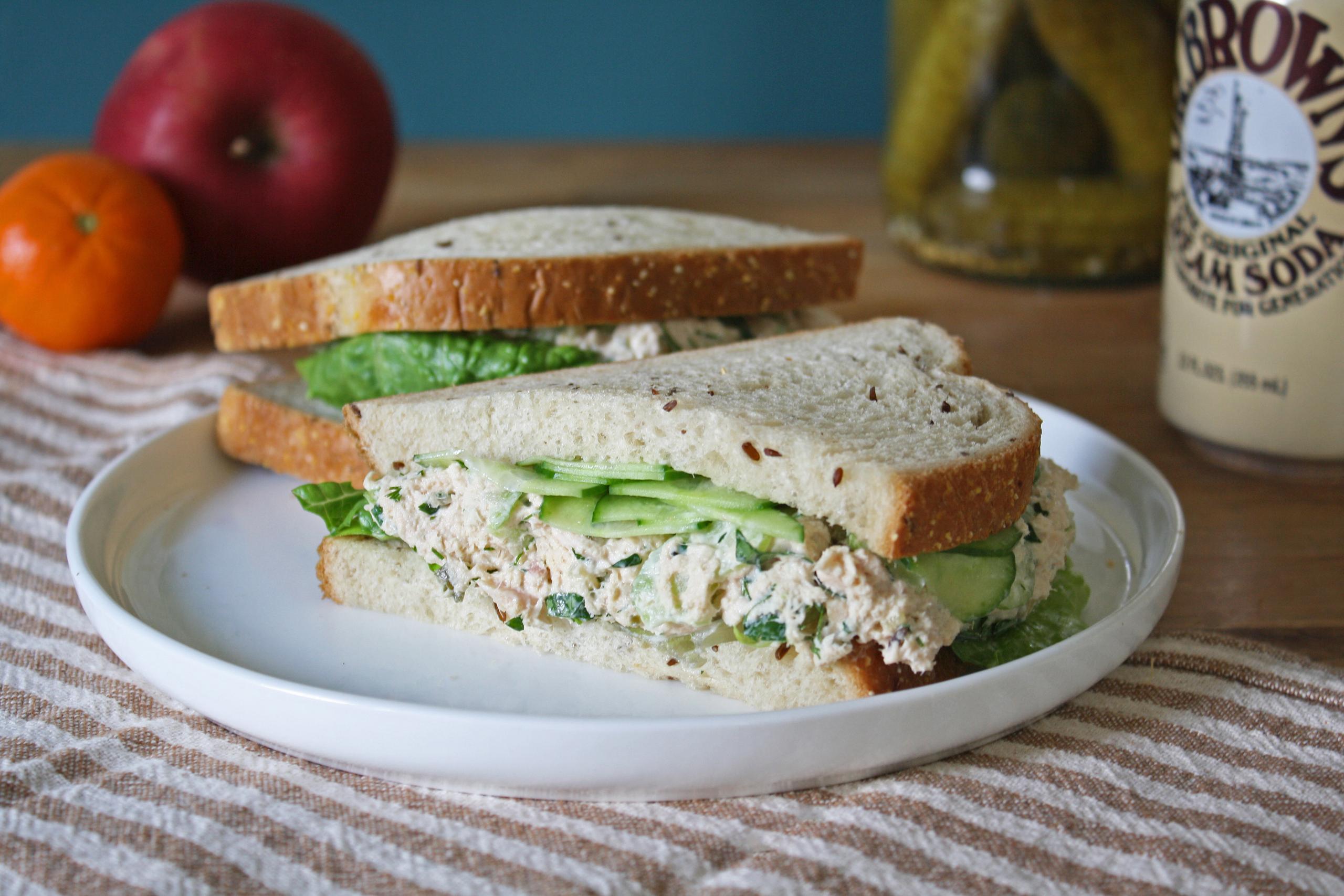Many will advise you to steer clear of the tuna at a Jewish deli, but there’s a reason almost every Jewish deli has tuna salad on their menu: American Jews love it.
A Brief History of Canned Tuna
In the United States, tuna became popular about a hundred years ago. Throughout the 19th century, tuna was not seen as a desirable fish and was primarily used to feed animals or as bait for fishing. Sardines were the most popular tinned fish. That changed in 1903 when the country experienced a sardine shortage due to extreme weather conditions and overfishing.
The owner of one of the largest sardine companies, Albert P. Halfill, decided to start canning Albacore tuna as a way to pivot his business. Tuna was abundantly available off the coast of Southern California, and he canned the fish by removing their natural oil and substituting it with vegetable oil. Hot steam was used to compress the fish, and both of these preparations aided in tinned tuna’s palatability. Halfill’s greater spark of genius was marketing the fish as “chicken of the sea.” Jessica Simpson was infamously mocked for thinking of tuna as chicken, but she was far from alone. This intentional comparison fundamentally aided the rise of tuna’s popularity in America. Tuna canners also started to publish recipes in magazines and newspapers, helping Americans learn to appreciate and use their product.
While Halfill deserves credit for popularizing canned tuna, Japanese immigrants were the first to identify Albacore off the coast of Los Angeles in 1901. The Japanese had been fishing for tuna since the 18th century and developed innovative fishing techniques. Despite their invaluable contributions to the rise of the tuna industry, Japanese immigrants were aggressively discriminated against then, and for decades after.
The Nosher celebrates the traditions and recipes that have brought Jews together for centuries. Donate today to keep The Nosher's stories and recipes accessible to all.
What started as a way to mitigate the demand for overfished sardines resulted in global mass consumption and overfishing of tuna. The most sustainable tuna today are fished through poll-and-line trolling, to reduce catching dolphins and other marine life. Certain brands prioritize testing mercury levels, which is a growing concern for tuna and other fish products. As a result, there is now a higher demand for sardines once again.
Did Jews Popularize Tuna?

Initially, interest in canned tuna disproportionately came from the East Coast, and New York more specifically. While there’s little documentation on which demographics were buying tuna, given that we know that tuna’s popularity began in New York City, it is likely that many of the early tinned tuna customers were Jewish. The rise of tuna coincided with the rise of Jewish delis as central gathering places for Jews in the 1920s. As tuna became readily available and desirable, tuna salad became a part of Jewish deli offerings. After all, delis were already serving a similar salad made of whitefish.
Salads made of protein, mayo, and relish came well before tuna. They became a popular way of using up scraps of chicken, salmon, or whitefish. Smoked whitefish salad was especially popular in Ashkenazi communities. Jewish immigrants discovered that the whitefish of the Great Lakes was similar to the freshwater fish of Eastern Europe, and they began to make smoked whitefish a staple of their delis and appetizing shops. The popularity of deli whitefish salad paved the way for tuna salad.
Tuna’s kosher-status also helped with its popularity among Jews. In Tablet’s 100 Most Jewish Foods, Ester Werdiger writes: “You know, Chassidish people who aren’t so Chassidish anymore but they still order a ‘toonabygel!’” Most canned tuna is kosher, most jarred mayo is kosher, therefore it was often considered kosher-enough for many Jews when they would go out to eat at a non-Jewish restaurant or diner.
For Jews of all denominations, tuna salad sandwiches on bagels or rye bread became a popular meal option, and remain so to this day.
What is Jewish Deli Tuna Salad?

There are thousands of tuna salad recipes, but online searches frequently show “Jewish Deli Tuna Salad” as a primary subcategory. What makes tuna salads “deli?” Recipes differ, but all include mayo, most include relish, and many include dill, celery, and onion. What makes the tuna salad Jewish deli-style is more about how it’s served: it has to be served on rye bread or a bagel. Tuna melts are another popular deli item, but they didn’t appear until the 1960s, when Kraft was trying to promote their newly invented Velveta cheese.
For me, deli tuna salad has to have dill to be Jewish. When I ran my own Jewish deli, we made it with local tuna, mayo, dill relish (not sweet), celery, fresh dill, and parsley. We served it on locally made rye bread, on a bed of greens, or as a side to-go. Tuna salad was always one of our best sellers. When the deli closed due to the pandemic, many customers unexpectedly reached out about how they missed the tuna.
Do You Really Need a Recipe?
Tuna salad is as personal as matzah balls, but I’ve written a recipe for my ideal tuna salad sandwich. I need mine on rye, with a side of Tim’s Cascade jalapeño potato chips and a Dr. Brown’s Cream Soda. The tuna salad sandwich will forever be one of my top comfort foods.

The Best Tuna Salad Recipe
Tuna salad is as personal as matzah balls, but I’ve written a recipe for my ideal tuna salad sandwich.
- Total Time: 5 minutes
- Yield: 1-2 sandwiches
Ingredients
For the salad:
- 1 can tuna
- 3 Tbsp mayo (Best Foods/Hellman’s)
- 1 rib celery
- 1 Tbsp dill relish
- squeeze of fresh lemon juice
- fresh chopped dill, to taste
- fresh chopped parsley, to taste
- salt and pepper
To serve:
- caraway rye bread/Jewish Rye
- crisp lettuce leaves
- thinly sliced cucumber
Instructions
- Drain your tuna, transfer it to a bowl and mash it very finely with a fork. Add the mayo, celery, relish, lemon juice, dill, and parsley and mix until well incorporated. Taste and modify as desired, and season with salt and pepper to your liking.
- Serve on rye bread with lettuce and thinly sliced cucumber. An extra schmear of mayo on the bread is always welcome.
- Prep Time: 5 minutes
- Category: Entree
- Method: Quick
- Cuisine: Ashkenazi




Quite the way, I actually make it except for one addition. I include one hard boiled egg for each can of tuna – minced and mixed in with the tuna. My family loves this recipe.
Pretty much the way I’ve been making my tuna salad recipe with one addition: I include one hard-boiled egg for each one can of tuna. Chop the hard boiled egg fine and mix it in with everything else. My family loves it this way.
That’s exactly how I make it, too.
Hard-boiled eggs are a great addition. I often mix half mayo wit half yogurt.Diced apples are a wonderful addition. I play around with the spices trying cinnamon, powdered curry, zatar, or Everything but the bagel.
We aways have potatoe chips with our toona sandwich. Additionally dill relish is mandatory.
I love this recipe. I tweak the proportions of mayo and celery (more!) but the other ingredients absolutely elevate this dish and now I can’t have my tuna any other way. It’s been a revelation!
Re: the tuna melt. Velveeta is over 100 years old. It was a staple in my house when I was a kid n the 1950s. Kraft Singles are about 75 years old. Tuna melts may have been popularized in the 60s, but I doubt the purpose was to “introduce” Velveeta.
I add diced carrots, chopped onions and chopped pickles and some juice instead of the relish, and always a bit of mustard. I serve it on rye bread or sliced challah with lettuce and sliced tomato. Yum!
What size tuna can are you using in your recipe?
love open face tuna melts. I toast rye bread slices lightly. spread some mayo, then add the tuna salad, sliced tomatoes and top it off with sliced swiss cheese. then slide under broiler in my toaster oven till cheese is melted,, yummy served with chips. BTW I use the Albacore tuna in water.. not oil. and I also do not add eggs.
gosh I have been doing it right—- you don’t need a receipe
Over here in England we do not have Jewish delis, and I had not heard of this dish. So yes, I am grateful for this recipe, although I do not know what dill relish is!
Agreed!
Loved it
Thanks for relating the history of the tun sandwich!
Thank you, I also love to add a hard boiled egg to my tuna salad 😋.
The recipe is delicious!! But– I don’t eat tuna very often because of the high Mercury level.. I eat red sockeye salmon for my fish salad!
Love it.
Between the mayo & the tuna, there’s plenty of salt. No need to add any.
We like it with tiny morsels of celery and carrot, mayonnaise, salt and pepper. Always on toasted rye with light mayo on the bread.
delete that q-cumber with a mashed in anchovy fillet. thx me later.
Always added a wedge of nicely diced kosher pickle. Either a half-sour Batampte, or a Grillos, depending on what’s in the fridge. The egg, as well. Hadn’t thought of fresh dill…will definitely give that a try! Enjoyed the article…